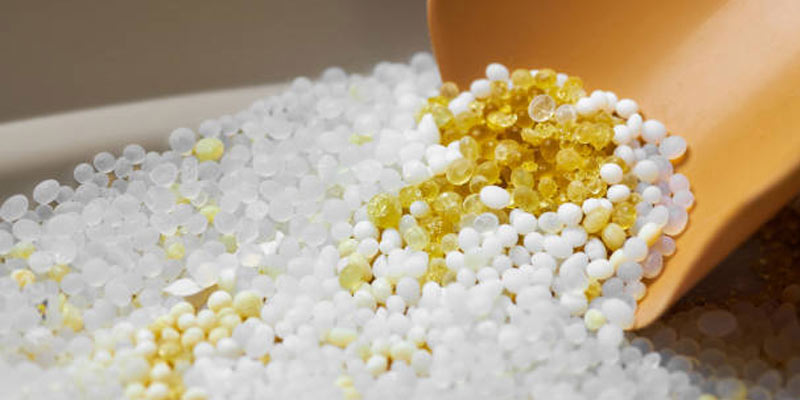How Silica Gel is used in CBD Filtration

What is Silica Gel used for?
Silica Gel has a chemical formula of SiO2 and is also known as Arten Silica Gel, Precipitated Silica, Amorphous Silica, Silica Gel Rubin, and Spherical Silica. It is a porous, granular, lightweight form of Silicon Dioxide and is usually produced from Sodium Silicate. High purity Silica gel has a colorless to white powder, not odorous, and is almost insoluble in water or alcohol at ambient conditions. Silica Gel is non-toxic, therefore it is not poisonous if consumed. Packages containing Silica Gel states “DO NOT EAT” since it is not considered food and can pose a choking hazard.
Commercially, it is found in various applications since it is used as a desiccant, meaning it adsorbs and holds moisture. Silica gel packets are used in dry food products such as beef jerky, since introduction of moisture into these foods can cause growth of mold and increase spoiling. It is also found in electronics to prevent the accumulation of condensation which can cause the components inside electronics to corrode or short. In the medical industry, it can be found inside of pill bottles since any moisture that is trapped inside the bottle can condense if temperatures were to drop rapidly and possibly react with the medicine affecting its functionality.

How does Silica Gel Work?
What makes Silica Gel so widely used across all industries is that it can hold up to 40 percent of its weight in moisture. This is due to the many voids that are formed by the network of silicon dioxide molecules, allowing water molecules to adhere to the surface of the Silica Gel. When a container is saturated with moisture, the Silica Gel will begin to adsorb it and in turn will release moisture if the air inside the container is too dry. Due to the versatility of Silica Gel, there is increasing interest in studying variants of Silica Gel and how it can be used in other applications, one of which is the CBD industry.
How is Silica Gel used in CBD Filtration?

The goal of CBD filtration is to use adsorbent medias to target certain compounds in conjunction with one another to maximize the number of impurities removed with a single pass. It’s important that the adsorbent chosen does not become over or undersaturated as this affects the product. Oversaturation will cause impurities to pass through the adsorbent media without being properly filtered, while undersaturation will cause the adsorbent to retain cannabinoids reducing yield. Thus, it is important to have a comprehensive understanding of which type of adsorbent media is best suited to remove certain contaminants, the ratio required, and in which order.
There are many types of processes and configurations when it comes to producing CBD, but the general steps include the extraction and 2-step filtration process. In the extraction step, a solvent such as ethanol, butane, CO2, or propane is blended with the crude material to liquefy the product. The solvent chosen is constrained by certain requirements such as cost, systems, and local laws. Ethanol is commonly used in cold extractions because it produces clear to light distillate oils and does not have a winterization step. Propane produces a cleaner process than butane and cuts the extraction processing time in half, however, local laws restrict the use of propane since it is a volatile chemical. CO2 produces the cleanest process; however, the operating systems are usually more costly to operate under higher pressures and can be less time efficient. A winterization step is required when using butane, propane, or CO2 as solvents since they are non-polar which dissolves excessive plant material.
Immediately following the extraction process, the cannabis needs to undergo a 2-step filtration system which consists of a mixture of activated carbon, MagSil PR, and Silica Gel. A mixture of these specialized filtration medias are packed into columns that are designed to remove various impurities, undesirable compounds, pigments, and aromatics. The filtration step is necessary because it stabilizes the cannabinoid complex and will result in degradation of the product and loss of potency if not performed. Silica Gel adsorbs chlorophylls, excessive terpenes, carotenoids, hydrophilic impurities, and particulates without interaction between the desired products. It is the main filtration for removal of dark colors such as the greens and oranges from the product. The layering approach to filtration aids in enhancing purification efforts. MagSil PR is of pesticide grade which means that it will specifically remove harmful pesticides yielding a much safer final product. Further steps such as “polishing” the product involves decreasing the porosity of the filter media allows for refining of particle removal.
Where to Buy Silica Gel
Silica Gel Powder, High Purity can be purchased online, locally or call 512-668-9918 to order bulk sizes. Handy individual consumer size containers for DIY projects are leak resistant. It is a high purity chemical substance that is ideally suited for scientific, development, analytical, clinical, medical, research and testing applications. Silica Gel Powder, High Purity is delivered quickly to laboratories, factories and businesses in safe chemical resistant containers.
Manufacturing size drums, IBC totes, pallet loads and bulk industrial production scale quantities are shipped from Lab Alley’s U.S.-based distribution centers by LTL freight carriers. Email customerservice@laballey.com if you have questions about buying Silica Gel Powder, High Purity.
The chemical formula for Silica Gel Powder, High Purity is SiO2, the CAS Registry Number is 112926-00-8, the PubChem CID is 24261 . Download the Silica Gel Powder, High Purity MSDS/SDS to get safety tips and health hazard information. Silica Gel Powder, High Purity should be carefully handled, stored in a cool dry place and chemical waste should be disposed of properly and safely,




